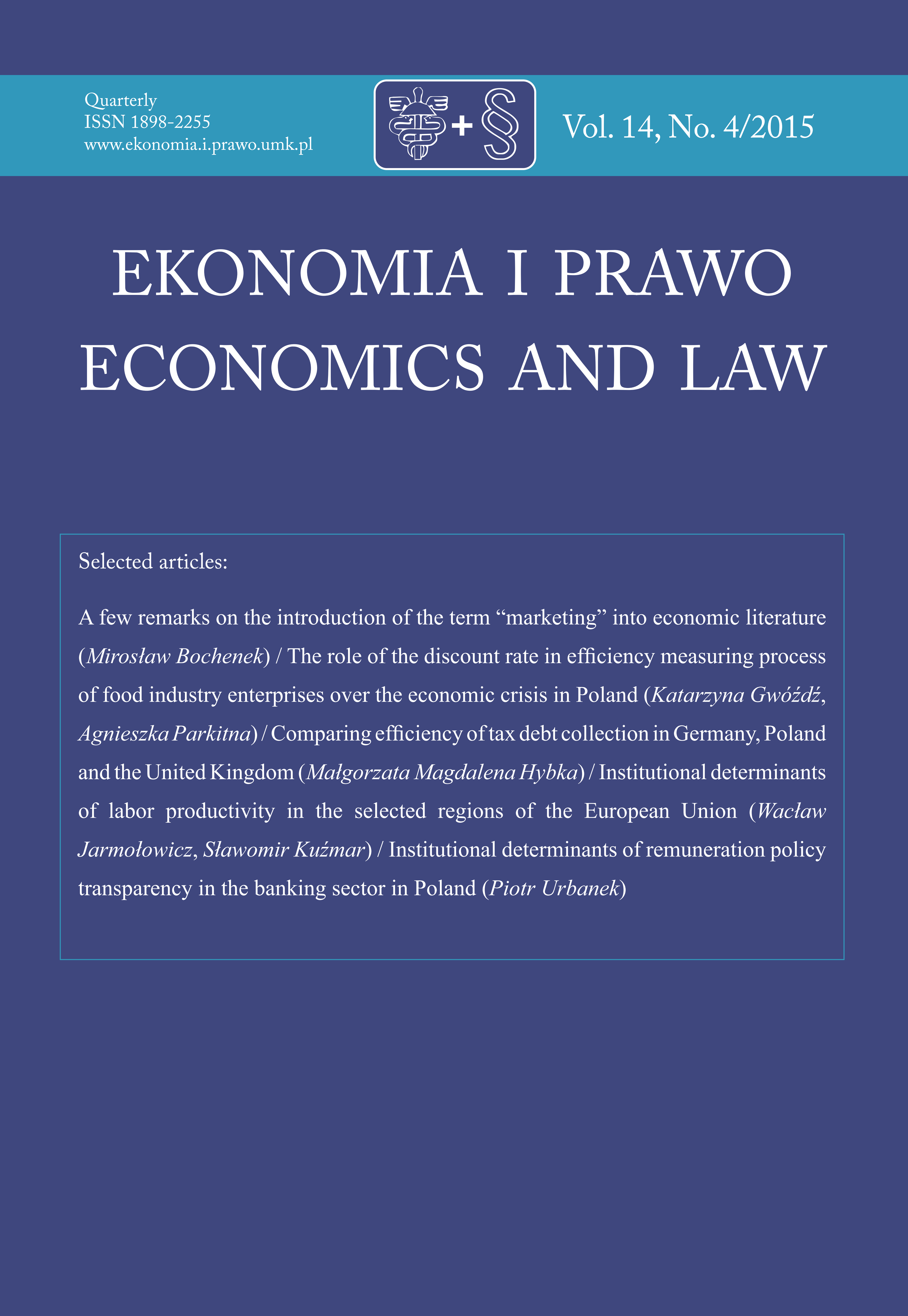THE ROLE OF THE DISCOUNT RATE IN EFFICIENCY MEASURING PROCESS OF FOOD INDUSTRY ENTERPRISES OVER THE ECONOMIC CRISIS IN POLAND
THE ROLE OF THE DISCOUNT RATE IN EFFICIENCY MEASURING PROCESS OF FOOD INDUSTRY ENTERPRISES OVER THE ECONOMIC CRISIS IN POLAND
Author(s): Katarzyna Gwóźdź, Agnieszka ParkitnaSubject(s): Economy, National Economy, Micro-Economics
Published by: Wydawnictwo Naukowe Uniwersytetu Mikołaja Kopernika
Keywords: capital cost; capital structure; enterprises efficiency; discount rate
Summary/Abstract: The work reads about the subject of the efficiency evaluation in the food industry enterprises over the economic crisis in Poland. The authors tried to prove the theorem that the applied assumption of using the constant discount rate in assessing enterprises efficiency is incorrect. In the first step, the definition of enterprises efficiency as well as the factors molding economic efficiency are shown. The measures of assessing enterprises efficiency are also shown. The fundamental part of the work is the empirical research, which proves the aim of the work. The content of the work consists of the research results related to ROE, own equity multiplier, risk premium, and weighted average cost of capital. The discount rate can be influenced by many factors e.g. Central Bank monetary policy, fiscal policy, capital structure, exchange rate, the value of gross domestic product. It is hard to expect that they will not change. To evaluate the real enterprise efficiency, its authentic measures should be assessed. If we assume that there is only positive risk premium and constant discount rate, the real efficiency level is counterfeited, especially during the periods of market crises. It is deceptive for investors and enterprise capital managers. The real assessment of efficiency measures is important because of the ambiguity of efficiency concept. In our case, it is simultaneously implied as effectiveness, economy, and proficiency. Considering the aim of the work, the measures of efficiency put to the research process were expressed by authoritative financial factors.
Journal: Ekonomia i Prawo. Economics and Law
- Issue Year: 14/2015
- Issue No: 4
- Page Range: 415-426
- Page Count: 12
- Language: English

